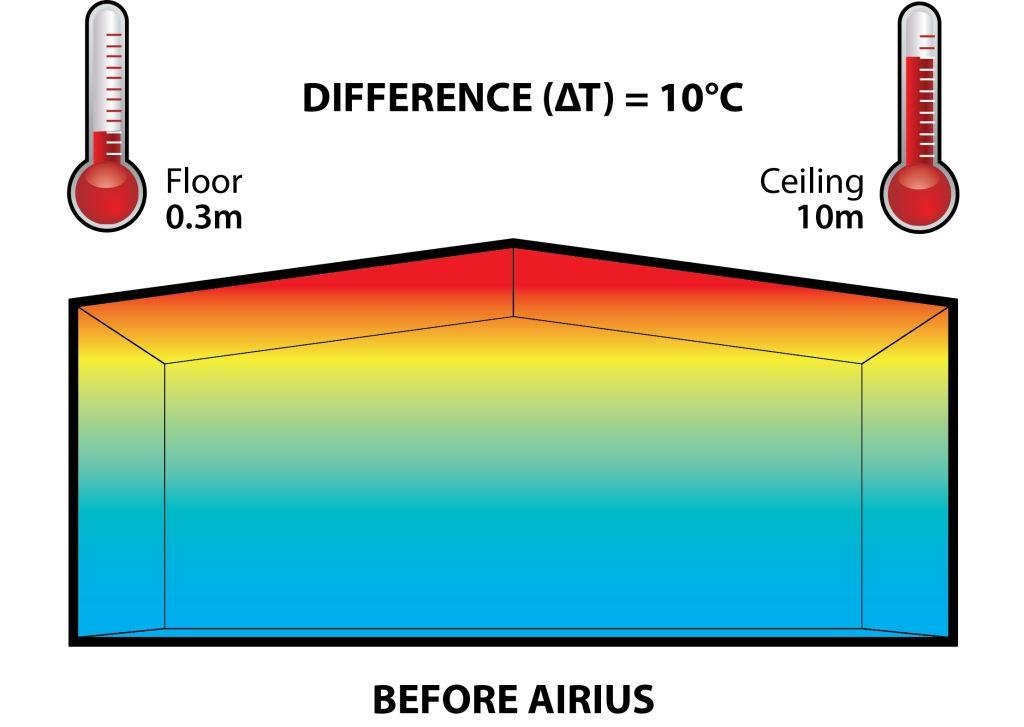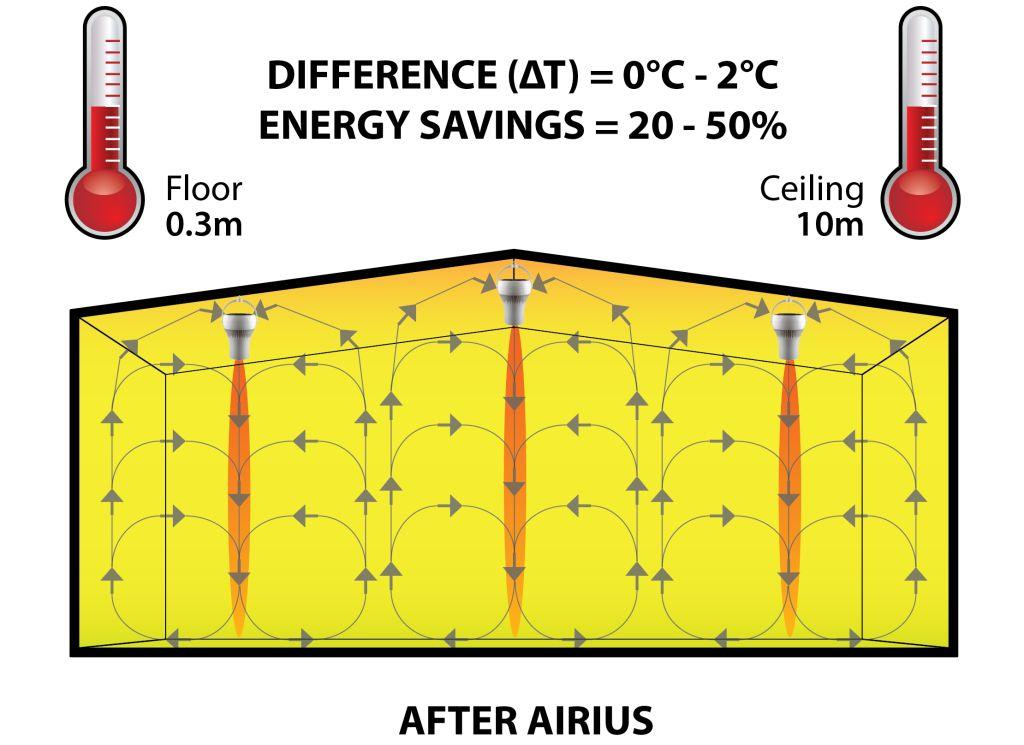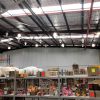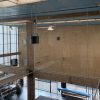
What’s the Easiest Way to Save 50% Off My Heating Bills?
Destratification!
Its winter, its cold and you are spending large amounts of money to heat your building. Gas or electricity – it doesn’t matter anymore as both are expensive. And projected price increases of 20% over the next 12 months and proposed new and stronger government energy efficiency requirements for your buildings, combine to make destratification in winter a significant opportunity for you or your clients to save money. Lots of it!
Simple physics tells us the hot air rises. Right up to the roof of your building.
So, when you are heating your building, you are continually supplying heat, which rises to the roof or the ceiling, nowhere near where you want it. Now in order to make the building comfortable at floor area, where the building inhabitants are located, you keep over delivering heat to ensure the floor area is comfortable. That’s a lot of wasted heat. All going up to your roof.
What good is it there?
You don’t live in your roof, do you?
That heat at the roof and cooler air at the floor is called stratification. Like when you dive into a pool and the top of the water is warm but when your feet drop down into the lower depths, its freezing.
The opposite of stratification, is destratification. This chart below explains it very simply.


Effectively destratifying your space will easily save you large amounts of heating energy….. and therefore money. For a relatively very low cost. And will significantly improve thermal comfort!
When people look at reducing heating costs, they usually investigate improving the efficiency of their capital equipment such as boilers, air conditioning systems, duct work etc. These are usually a large expense and often involve major works with negative impacts on your facility.
However, after implementation the same stratification problem remains. Even though your building is now more efficient, it is not optimised and you are still over delivering heating energy to your building to compensate for the heat sitting under the roof or ceiling. Yes, it’s a more efficient heating energy source now….. but it’s still being wasted.
And costing you …. Money. Lots of it!
Improved air conditioning or heating design will not result in destratification. Only a specific destratification type of fan can ensure the warm air is effectively brought down to the floor and through the thermal layers existing in the space.
Remember warm air is lighter than cold air so it’s not easy to push it down to the floor. It just wants to keep rising back up.
Like the old beach ball in the pool game we played as kids. Trying to get the beach ball to the bottom of the pool. Remember that.? It wasn’t easy, was it? That’s why proper destratification needs an engineered, proven solution.
And effective destratification occurs at the floor level not up at the roof zone where the destratification unit is placed.
Destratification in heating environments offers huge potential energy savings and very short Returns on Investment.
Unfortunately, it’s a relatively new concept in Australia but in the USA, Europe and UK, destratification has been proven over many years to be a low cost, minimal impact and very effective way to save heating energy.
Sure, those guys need more heating than us but we still need to spend money to heat our facilities in most Australians states over winter. Generally, there is a 0.5-1 Deg. C temperature increase per metre of building height.
A 5-metre tall building may easily be 5 Deg. C warmer at the ceiling or roof. That’s a lot of money sitting up there under your roof. Can you afford to be so inefficient?
Let’s consider some of the examples of the value of destratification:-
1. Lush Cosmetics in UK – Saved 61% of their heating energy by using destratification with a ROI of 26 DAYS! That’s 26 Days!
– They saved $20,000 dollars over winter for a $5,000 install cost!
2. Axeman’s Hall of Fame in Tasmania – after implementing destratification turned off 60% of their heating inside two days
– Estimated ROI – 3 Months!
3. Impress Metal Packaging – UK -Saved 45% of their heating cost in one winter after implementing destratification. ROI less than three months!
– They spent $35,000 on destratification fans installed and saved $105,000 in heating bills in their first winter!
4. Siemens UK Rail Maintenance Shed – Installed destratification fans. ROI -18 months.
– Their system cost $34,000 to install and saved $20,000 over the first winter.
What could your business or your client do with 25-60% heating savings? New facilities? new safety gear? new IT systems? The list is endless.
There are hundreds of examples like this.
Research by BSRIA in the UK, (like our CSIRO) indicates some typical energy savings achievable during winter when destratifying your space. These savings amounts are regularly achieved or bettered by using engineered destratification fans.

Destratification in winter is a simple way to significantly reduce your facility’s running costs.
Consider the following benefits:
- Simple to implement
- Minimal disruption to your operations
- Flexible layouts and easily retrofitted
- Fast ROI
- Comparatively low cost
- Massive heating cost savings
- Improved thermal comfort
- No commissioning
- No maintenance
If saving lots of money in your facility is important to you, and you spend large amounts on heating and would like some insights on how your business can easily save heating costs, contact the Destratification Specialists, Airius, on +(61) 401 848 888 or go to our web site www.airius.com.au OR email us at [email protected] to find out how you can easily save up to 50% of your heating bills this winter. Before it’s too late.
John Brodie, MSc (Sus Des) U Syd
Managing Director, Airius Australia





